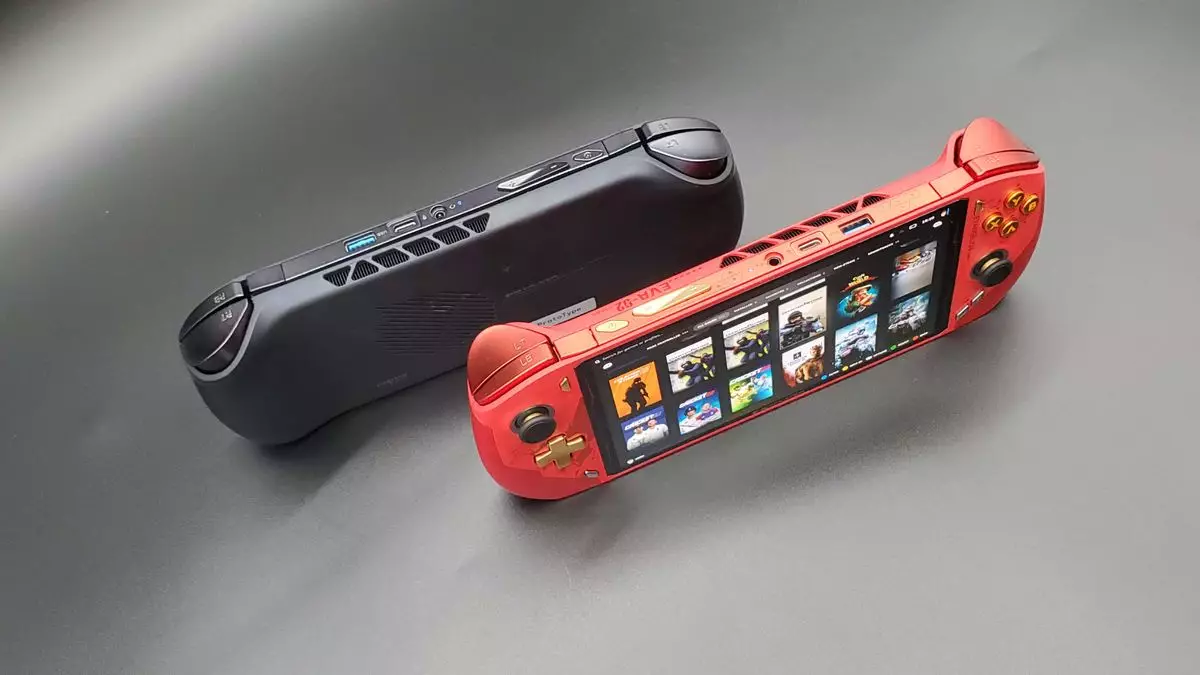In the ever-evolving landscape of gaming technology, AMD has announced plans that could possibly redefine handheld gaming devices. The company is set to introduce the Ryzen AI Z2 Extreme APU, featuring a fully functional Neural Processing Unit (NPU). This addition raises an interesting question for gamers and tech enthusiasts alike: What tangible benefits does an NPU bring to gaming handhelds? While the potential of AI is enticing, it’s essential to dissect what this means for the user experience and the broader market.
APUs (Accelerated Processing Units) have historically combined CPU and GPU functionalities, but the introduction of an NPU into this mix significantly alters the equation. AMD’s ‘Z’ series is designed explicitly for handheld devices, optimizing the performance of its chips to make gaming on-the-go not only accessible but powerful. The Z2 series epitomizes this effort, with the Z2 Extreme showcasing AMD’s state-of-the-art technologies.
The Z2 Extreme: Power Meets Complexity
At the heart of the Z2 Extreme is AMD’s Strix Point architecture, which combines 16 RDNA 3.5 graphics cores with eight Zen 5 CPU cores—three standard and five compact Zen 5c cores. This amalgamation offers a potent combination for handheld devices, which have historically struggled with performance compared to their stationary counterparts. However, where the confusion sets in is the structural inconsistency within the Z2 line.
AMD has detailed multiple Z2 APUs, but they are derived from different architectures, creating a puzzle for consumers. For example, while the Z2 Go utilizes older Rembrandt chips and the standard Z2 employs last-gen Hawk Point APUs, each delivers a vastly different experience. As if that complexity isn’t enough, the only device currently on the market that has utilized the Strix Point architecture with an enabled NPU is the OneXPlayer OneXFly F1 Pro, which already highlights the duality of the products being offered.
Navigating through these various models and their architectures can feel overwhelming. For consumers, this could lead to confusion when making purchasing decisions, particularly when faced with differing specifications that seem to clash rather than align.
From Marketing Buzzwords to Practical Benefits
The introduction of the NPU in the Ryzen AI Z2 Extreme may predominantly be a strategic move to capitalize on the AI craze that’s taken the tech world by storm. Device marketing often hinges on the latest technologies, and terms like “AI-enabled” generate interest, potentially boosting sales. The NPU’s functionality could allow for exciting features, such as support for advanced virtual assistants like Microsoft’s Copilot+, enhancing the overall user experience.
However, the reality of AI utilization in handheld gaming is murky. Currently, the most significant AI applications, such as ChatGPT, largely rely on cloud computing rather than local processing power. This makes one question the immediate advantage of having an NPU embedded in a handheld device—will it truly lead to substantial enhancements in gameplay, or is it mainly a marketing gimmick?
Battery life is another pressing issue associated with the NPU activation. Gaming handhelds often sacrifice endurance for performance, resulting in devices that require frequent recharging. The implications of adding another power-consuming component like an NPU are uncertain. Will users experience diminishing playtime, or can AMD find a balance that allows for robust performance without draining battery life excessively?
The Inevitable Future of Handheld Gaming
It is plain to see that AMD is aiming to carve out a niche in the handheld market, positioning itself as a leader in innovation. The Ryzen AI Z2 Extreme APU suggests an acknowledgment of consumer demands not just for power, but also for software that leverages emerging AI technologies. As handheld gaming devices become increasingly capable, it’s necessary for developers to harness that potential effectively.
So, where does that leave gamers? The next generation of handhelds could provide advanced capabilities previously limited to bulky gaming PCs, fueled by AI-driven functionalities. Yet, whether gamers ultimately benefit from this shift will hinge on practical implementation rather than clever marketing.
As AMD continues to navigate the complexities stemming from varying architectures and the potential of AI, one thing remains clear: Handheld gaming is on the brink of a significant transformation. Whether the Ryzen AI Z2 Extreme becomes a pivotal player in this change will be determined by how well it meets user needs, manages performance with efficiency, and champions the integration of AI in a truly beneficial manner.

